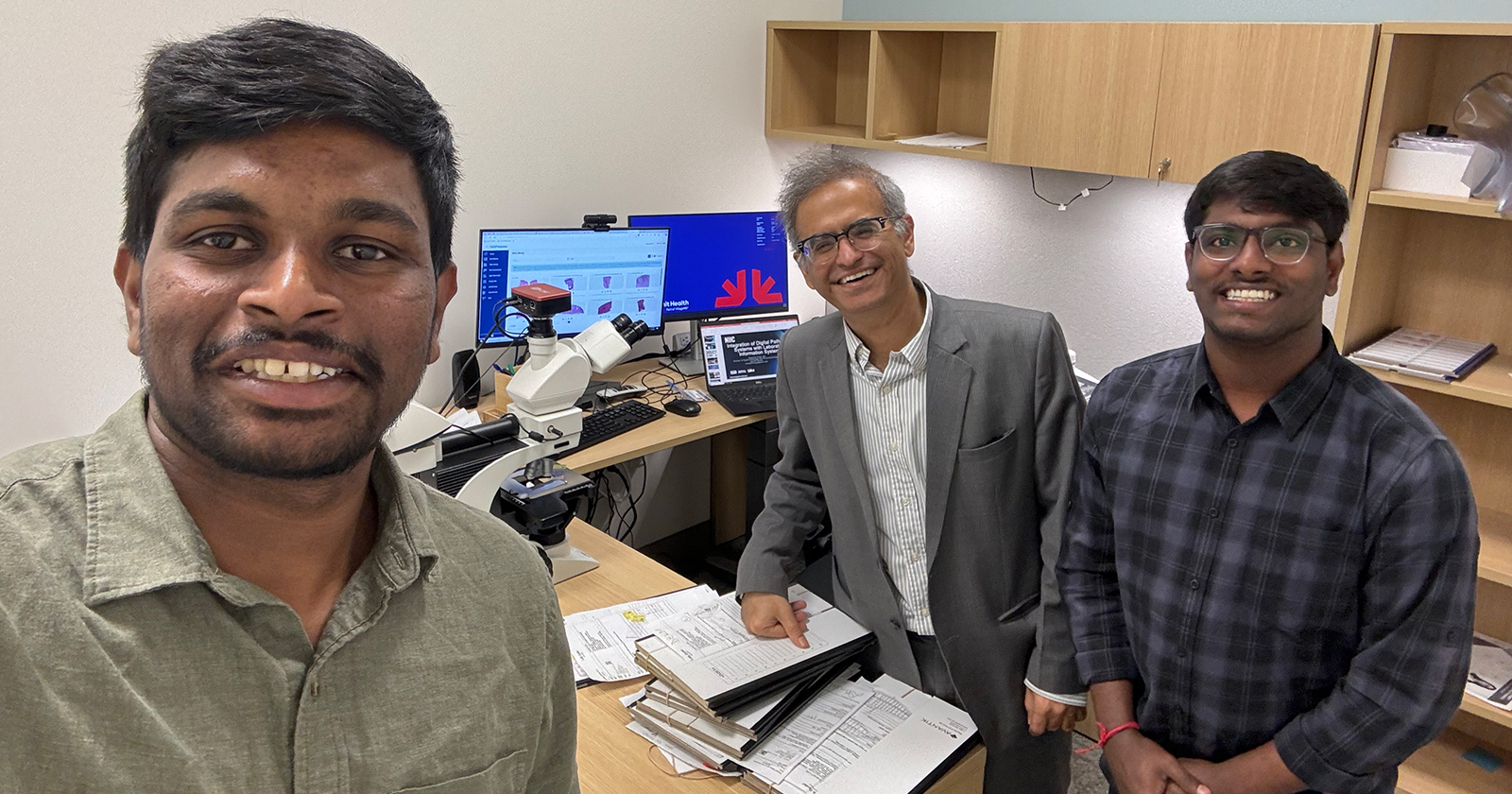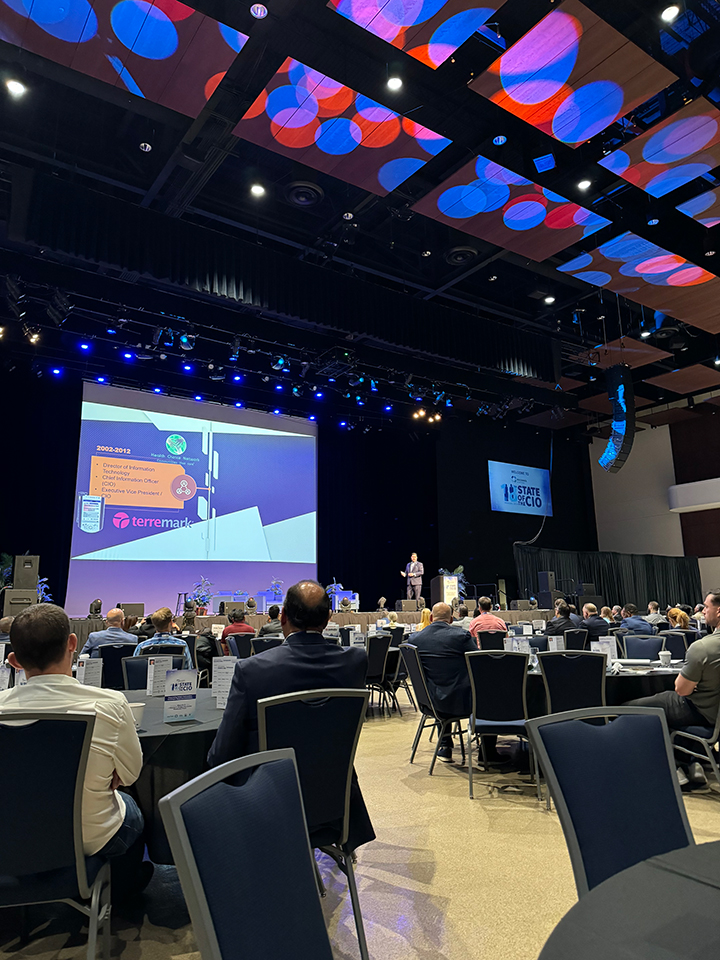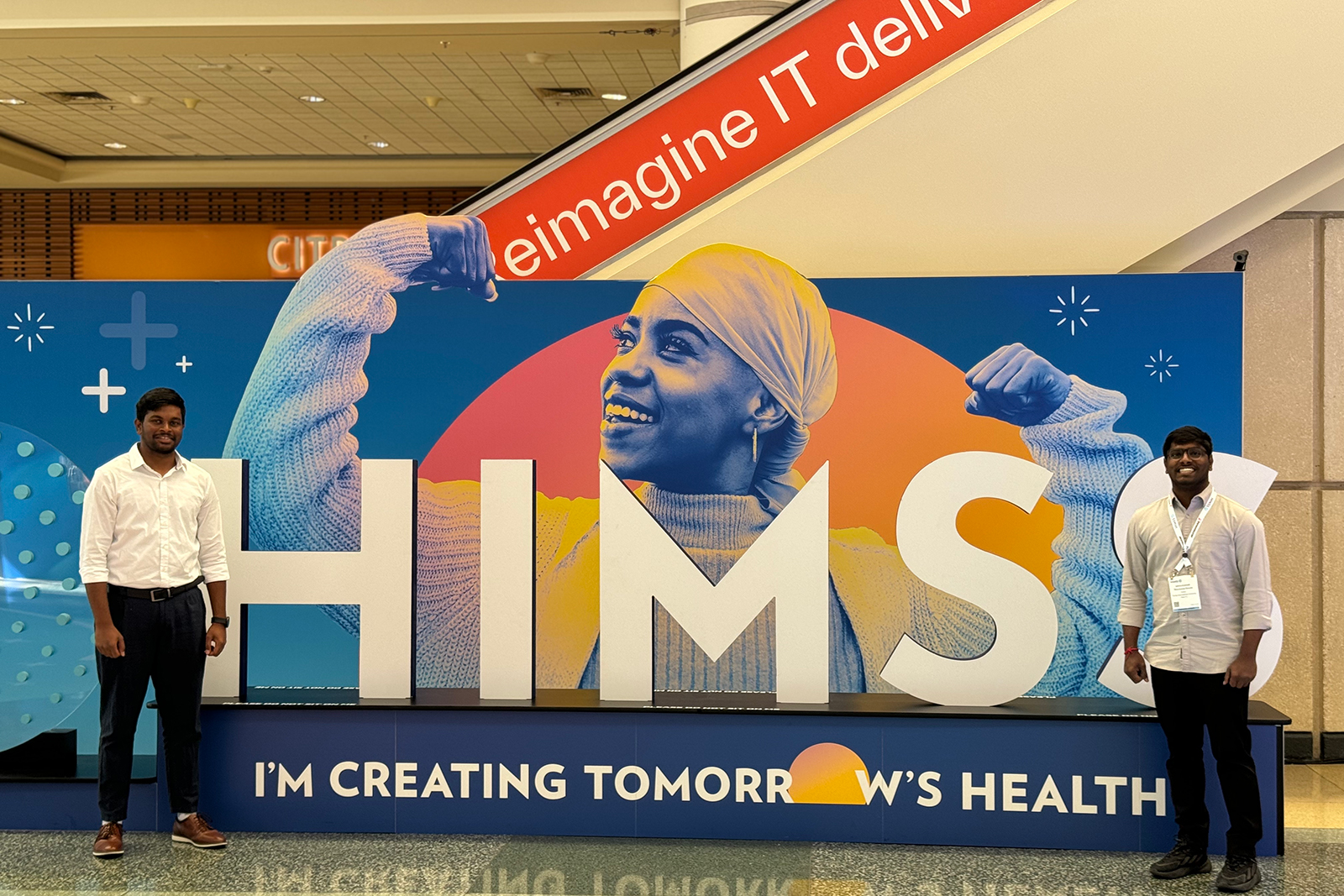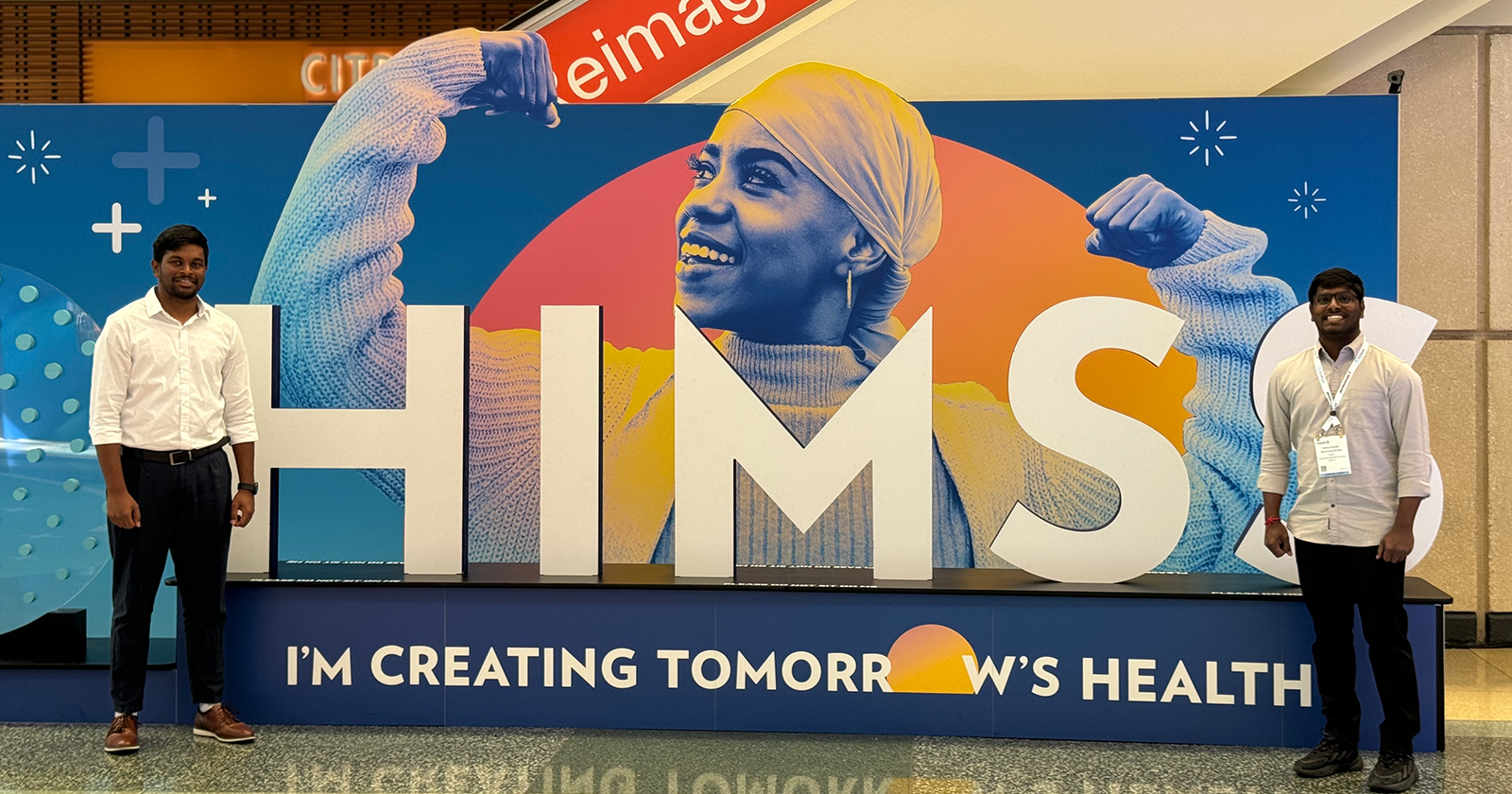Amidst increased efforts to advance digital pathology, digitizing images of human tissue and other samples used to diagnose disease, a student-faculty team from FIU Business zeroed-in on blockchain and data storage to compete in a National Science Foundation (NSF) entrepreneurial training program.
The challenge: commercialize research that has been published by FIU Business faculty.
Students Shiva Kumar Gosula, who is in the FIU’s Master in Cybersecurity program, and Varun Sakilam, who is in the Master in Information Systems and Business Analytics program at FIU Business, were co-entrepreneurial leads.
The NSF gave the team a $50,000 grant to begin the project.
Gosula and Sakilam focused on identifying a market for the prototype of an encryption algorithm developed from research Hemang Subramanian, FIU Business associate professor of information systems and business analytics, published in the Journal of Medical Internet Research in 2022 and 2023 . FIU has filed a patent application for the algorithm technology.
“This is a very unique experience for graduate students,” said Subramanian, the principal investigator in the NSF program. “The entrepreneurial venture is fully based on research published at FIU Business.”

One study created a digital pathology system that stores human tissue scans in high resolution using blockchain-based smart contracts and the Interplanetary File System, which is used to store data online in a distributed network of clients. The other study established a decentralized marketplace for sharing patient-generated health information using smart-contract technology.
Pathology, a branch of medical science that is focused on the study and diagnosis of disease, is slowly moving away from conventional methods - two glass plates with a thin tissue sample between them - in favor of high-resolution digital images that can be stored, analyzed and shared electronically.
While digital pathology enables faster diagnosis and advanced image analysis, fewer than 15% of U.S. hospitals are digitized, often due to expensive storage, data security requirements and network limitations to transfer high-resolution images.
“We’re looking at a market that’s growing at a fast rate and how we can capitalize on that because it will need our technology to keep records secure,” Subramanian said. “The goal of the project is to seek and validate whether the product is valuable for the industry.”
As part of the project to develop a target market and business model for the algorithm, Gosula and Sakilam were tasked with gathering information on the benefits and challenges the industry faces.
Over the course of seven weeks, guided by the team’s industry mentor Yogeswaran Umasankar, research specialist at Startup FIU, they conducted a business model canvas, customer segmentation analysis and traveled to various conferences and trade shows.
“We had a lot of networking, met different people, we got to know their problems, traveled a lot to different places,” Sakilam said.
Throughout the process, they interviewed more than 100 experts, including pathologists, cybersecurity professionals, CEOs of healthcare organizations and representatives of companies specializing in diagnostic services, as well as in healthcare artificial intelligence.
“Our beachhead is the pathology industry, but we discovered that pathologists are not the only decision makers; CMOs and CIOs will play crucial roles in adopting new technologies, said Gosula. “We got to know a niche area of how the healthcare information system ecosystem works.”

The next phase, Subramanian noted, will be to conduct more research to identify where in the supply chain the encryption algorithm will find the right fit and apply for further commercialization grants for the idea.


